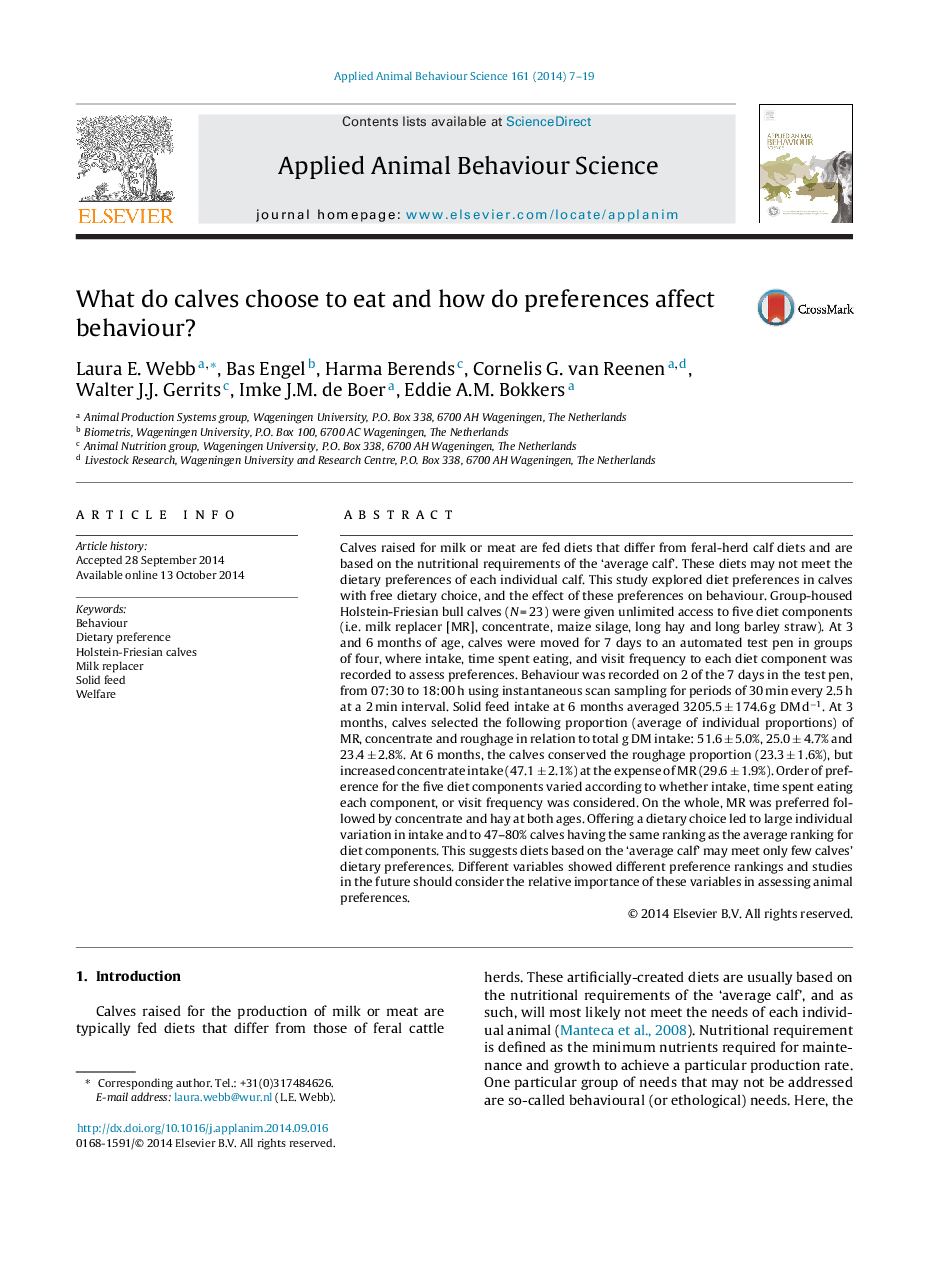| کد مقاله | کد نشریه | سال انتشار | مقاله انگلیسی | نسخه تمام متن |
|---|---|---|---|---|
| 4522508 | 1625345 | 2014 | 13 صفحه PDF | دانلود رایگان |
• Ranking of diet components in calves depends on the variable(s) used to assess preferences.
• Calves prefer milk replacer, concentrate and hay over maize silage and straw.
• Dietary choice in calves results in large individual variation, particularly at younger ages.
• Calves are able to select a diet that meets their individual behavioural needs.
Calves raised for milk or meat are fed diets that differ from feral-herd calf diets and are based on the nutritional requirements of the ‘average calf’. These diets may not meet the dietary preferences of each individual calf. This study explored diet preferences in calves with free dietary choice, and the effect of these preferences on behaviour. Group-housed Holstein-Friesian bull calves (N = 23) were given unlimited access to five diet components (i.e. milk replacer [MR], concentrate, maize silage, long hay and long barley straw). At 3 and 6 months of age, calves were moved for 7 days to an automated test pen in groups of four, where intake, time spent eating, and visit frequency to each diet component was recorded to assess preferences. Behaviour was recorded on 2 of the 7 days in the test pen, from 07:30 to 18:00 h using instantaneous scan sampling for periods of 30 min every 2.5 h at a 2 min interval. Solid feed intake at 6 months averaged 3205.5 ± 174.6 g DM d−1. At 3 months, calves selected the following proportion (average of individual proportions) of MR, concentrate and roughage in relation to total g DM intake: 51.6 ± 5.0%, 25.0 ± 4.7% and 23.4 ± 2.8%. At 6 months, the calves conserved the roughage proportion (23.3 ± 1.6%), but increased concentrate intake (47.1 ± 2.1%) at the expense of MR (29.6 ± 1.9%). Order of preference for the five diet components varied according to whether intake, time spent eating each component, or visit frequency was considered. On the whole, MR was preferred followed by concentrate and hay at both ages. Offering a dietary choice led to large individual variation in intake and to 47–80% calves having the same ranking as the average ranking for diet components. This suggests diets based on the ‘average calf’ may meet only few calves’ dietary preferences. Different variables showed different preference rankings and studies in the future should consider the relative importance of these variables in assessing animal preferences.
Journal: Applied Animal Behaviour Science - Volume 161, December 2014, Pages 7–19
